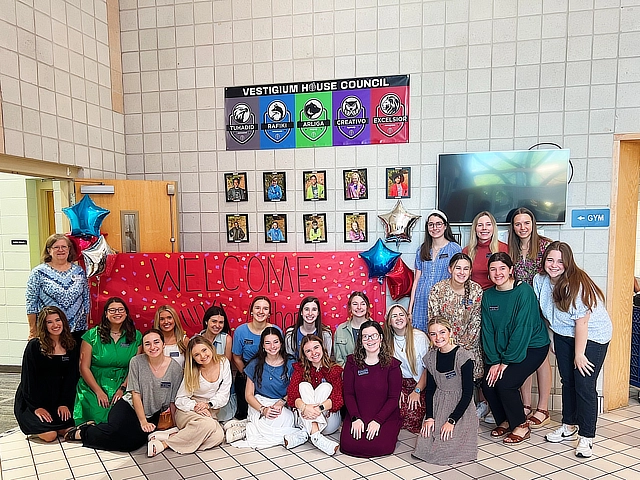
Orlean Beeson School of Education has hosted its Young Authors Conference for years, customarily inviting local schools to Samford’s campus for a day of literary magic, inspiring young students to cultivate their reading and writing skills. But this year, the School of Education brought the magic to the students with a visit to Trace Crossings Elementary School.
Samford and Trace Crossings faculty and students gathered together with Trace Crossings’ first graders to learn more about the importance of writing. Nell Branum ‘76, an alumna of Samford’s School of Education, was this year’s featured author and guest.
Branum introduced the students to her children’s books with special emphasis on her work, cowritten with her mother, R is for Rosie the Riveter: Working Women on the Home Front in World War II. The nonfiction book for children is an alphabet introduction to women who stepped up on the home front to help win World War II.
Branum spoke of how, with the help of her family, the writing process began to work in her life and how it can work in the lives of our students. The first graders then returned to their classrooms for writing exercises led by Samford’s teacher education students. In these exercises, students were encouraged to be creative and to tell stories about what they wanted to be when they grew up.
The John and Frances Carter Young Authors Conference began in 2007 in honor of Dr. John T. Carter and Dr. Frances Carter. Dr. John Carter joined the Samford faculty in 1956 and served until his retirement in 1987. He was dean of the School of Education from 1980 to 1986. His wife, Dr. Frances Carter, also served as a senior faculty member for many years and founded the school’s early childhood education program. The Carters have supported education programs by funding scholarships, awards and sponsoring the Young Authors Conference, held annually since its inception.
Nell Branum is the daughter of the Carters. She spoke of her parents' legacy and the impact this event has had on her, her family, and young students throughout Samford history.
“They really loved the idea of the children being able to write something. They led children to write poems when they taught workshops, and loved to see them write. I grew up on Samford’s campus, I learned to read in the curriculum lab. When I grew up, I went to Samford, my husband went to Samford, and two of our children went to Samford. There’s no place like Samford,” said Branum.
